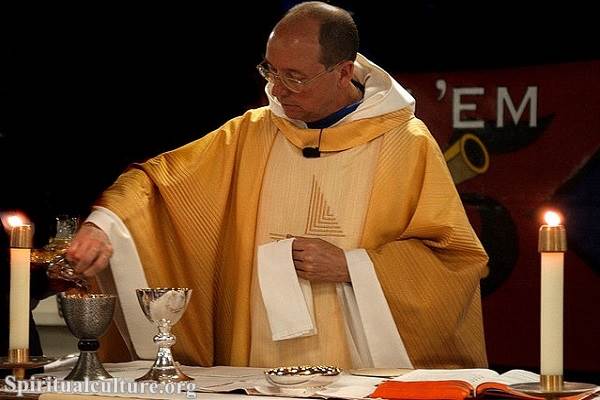Within the heart of Catholicism, no other human figure — apart from Jesus — has stirred such deep affection, contemplation, and theological reflection as Mary, the mother of Christ. Her presence flows like a gentle river through the Church’s doctrine, art, prayer, and liturgical life. She is hailed as the Theotokos (God-bearer), honored as a model of discipleship, and invoked in times of joy and sorrow.
But why is Mary so central to Catholic devotion? How has the Church’s understanding of her developed across centuries? And what does her role reveal about the broader vision of salvation, the Church, and the human response to grace?
In this article, Spiritual Culture invites you into a profound exploration of Mary’s role in Catholic doctrine and devotion — not merely as a historical mother, but as a living symbol of God’s love, humanity’s “yes,” and the Church’s maternal heart.
Mary in Catholic Doctrine: A Foundation of Faith
Mary’s Divine Maternity: Mother of God
One of the most essential titles attributed to Mary is “Mother of God” (Greek: Theotokos), formally declared at the Council of Ephesus in 431 AD. This doctrine is not primarily about Mary, but about Jesus — affirming that He is both fully God and fully man. By calling Mary the Mother of God, the Church safeguards the unity of Christ’s person.
Theological Significance
As the Catechism of the Catholic Church explains:
“Mary is truly ‘Mother of God’ since she is the mother of the eternal Son of God made man, who is God himself” (CCC 509).
This title acknowledges Mary’s unique role in the Incarnation — God entering human history. Through her free consent (“Let it be done to me according to your word” – Luke 1:38), Mary became the vessel through which salvation entered the world.
The Immaculate Conception
Another cornerstone of Marian doctrine is the dogma of the Immaculate Conception — proclaimed in 1854 by Pope Pius IX. It teaches that Mary was preserved from original sin from the moment of her conception.
A Grace Beyond Nature
This does not mean Mary did not need redemption; rather, it affirms that she was redeemed preemptively by the merits of Christ’s future sacrifice. As the Church teaches:
“The most Blessed Virgin Mary was, from the first moment of her conception… preserved immune from all stain of original sin…” (Ineffabilis Deus, 1854).
She is the first to receive the fruits of Christ’s victory, not apart from Him, but through Him.
Perpetual Virginity
The Catholic Church also upholds the perpetual virginity of Mary — before, during, and after the birth of Christ. This affirms her total consecration to God and the miraculous nature of Jesus’ birth.
This doctrine underscores Mary’s singular mission — she was not just a biological mother, but a spiritual vessel fully dedicated to the divine plan.
The Assumption of Mary
In 1950, Pope Pius XII declared the Assumption of Mary as dogma: that at the end of her earthly life, Mary was assumed body and soul into heavenly glory.
A Sign of Hope
While not explicitly recorded in Scripture, the Assumption aligns with Mary’s sinlessness and closeness to her Son. It reveals her as a forerunner of the Church, a symbol of the destiny that awaits all who say “yes” to God.
As the Catechism affirms:
“The Assumption of the Blessed Virgin is a singular participation in her Son’s Resurrection and an anticipation of the resurrection of other Christians” (CCC 966).
Mary in Catholic Devotion: Love, Prayer, and Trust
The Rosary: A Meditation on the Life of Christ with Mary
Perhaps the most well-known Marian devotion is the Rosary — a rhythmic, meditative prayer that walks through the mysteries of Christ’s life, death, and resurrection, accompanied by Mary.
Far from being a distraction from Jesus, the Rosary is deeply Christ-centered. Mary’s role is to lead the faithful into deeper contemplation of her Son.
“To Jesus through Mary” is not merely a pious saying — it is the Rosary’s entire design.
Marian Feast Days and Liturgical Life
Throughout the Church calendar, Marian feast days punctuate the rhythm of Catholic worship:
- January 1: Solemnity of Mary, Mother of God
- March 25: Annunciation
- August 15: Assumption
- December 8: Immaculate Conception
- And many more.
These celebrations do not glorify Mary instead of God — they honor what God has done through her.
Titles of Mary: A Language of Love
Catholic devotion is rich with poetic titles for Mary — not as doctrinal additions, but as expressions of the Church’s love:
- Queen of Heaven
- Our Lady of Sorrows
- Morning Star
- Ark of the Covenant
- Refuge of Sinners
- Seat of Wisdom
Each name is a window into her spiritual significance — reflecting her humility, her strength, and her closeness to the mystery of Christ.
Mary as Intercessor: A Spiritual Mother for All
Why Catholics “Pray to” Mary
One of the most misunderstood aspects of Catholicism is the practice of praying to Mary. Catholics do not worship Mary — they honor her and ask for her intercession, just as one might ask a beloved mentor or elder to pray for them.
As the Hail Mary prayer says:
“Holy Mary, Mother of God, pray for us sinners, now and at the hour of our death.”
Mary’s intercession is rooted in her maternal care for all believers. At the foot of the Cross, Jesus said to the beloved disciple:
“Behold your mother.” And to Mary: “Woman, behold your son” (John 19:26–27).
Catholics believe this was more than a moment of personal concern — it was the beginning of Mary’s spiritual motherhood over the Church.
Apparitions and Messages of Peace
Marian apparitions — such as at Lourdes, Fatima, and Guadalupe — are not doctrine, but recognized as private revelations that reinforce the Gospel message.
In these events, Mary often appears as a gentle mother calling for prayer, conversion, and compassion. She does not bring new teachings, but lovingly echoes what the Church already holds true.
Mary as Disciple: A Model of Faithful Response
Her “Yes” Was the Beginning
Mary’s greatness lies not in power, but in surrender. Her fiat — her “let it be” — was the most profound act of faith ever made by a human being.
“Blessed is she who believed that the Lord would fulfill his promises to her!” (Luke 1:45)
In a world that prizes control, Mary’s openness to mystery becomes a timeless model of spiritual receptivity.
Her Journey Was Not Easy
Mary’s life was marked by suffering: misunderstanding, exile, watching her Son suffer and die. She was not shielded from pain. Instead, she embraced it in love.
She stands as the Mater Dolorosa — the Sorrowful Mother — whose compassion was forged in the fires of grief. In her we find a companion in suffering.
Her Song Still Sings
In the Magnificat (Luke 1:46–55), Mary praises God for lifting the lowly and scattering the proud. It is not a quiet lullaby — it is a revolutionary hymn of divine justice.
Her words echo through the centuries as a song of hope for the oppressed and a challenge to the powerful.
Reflect and Reimagine: What Mary Means for You
Mary is not an abstract figure of piety or a distant queen. She is a living reminder that God enters the world through openness, humility, and trust. She is the first Christian, the first disciple, the first to believe — and the one who shows us how to believe.
To honor Mary is to honor the beauty of grace received and responded to. To walk with her is to walk with the one who always points us toward Christ. And to love her is to join the Church in whispering across generations, “Blessed are you among women.”
Whether you are Catholic or not, Mary invites you to rediscover a deeper dimension of spiritual motherhood — one that nurtures, prays, and believes with fierce tenderness.
May her story inspire you to say yes — again and again — to the call of grace.
With love and wisdom,
Spiritual Culture



